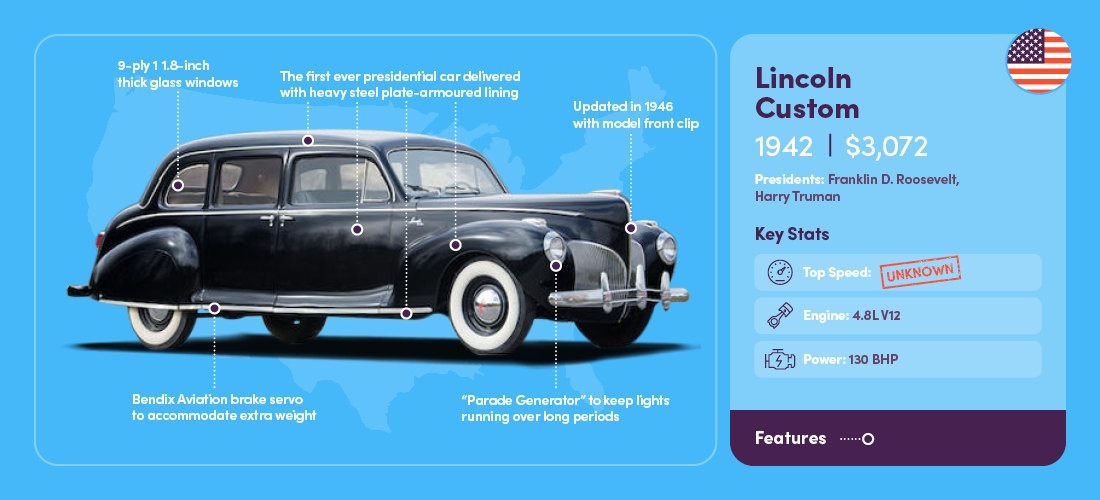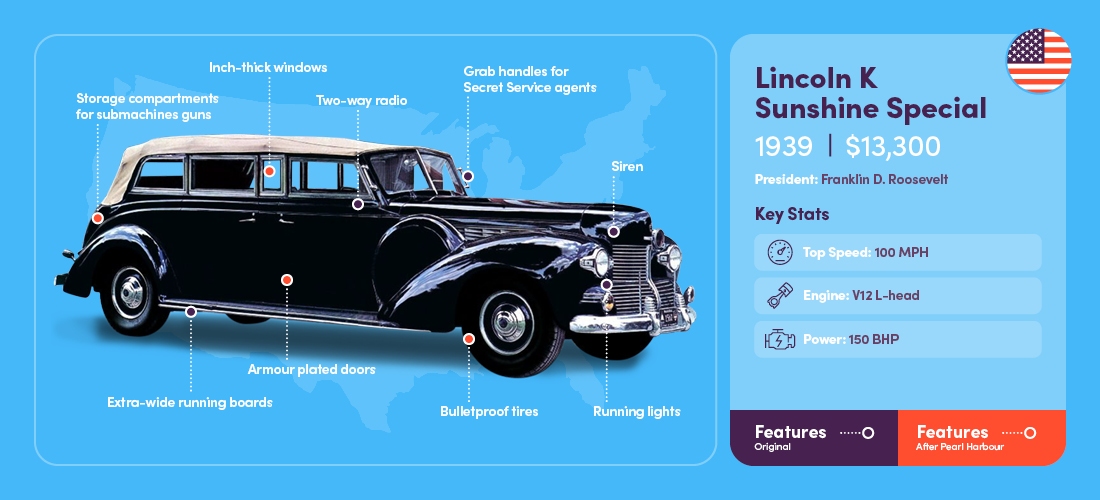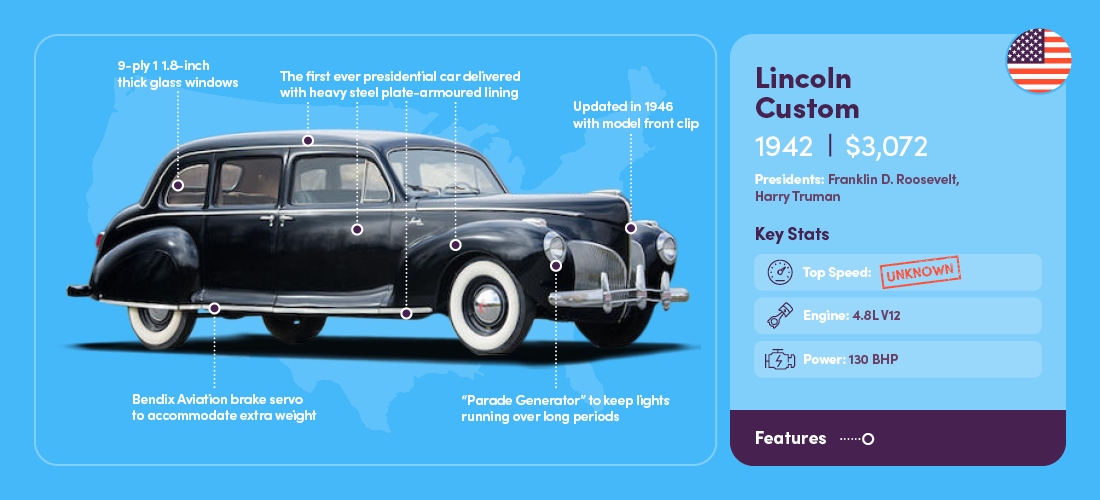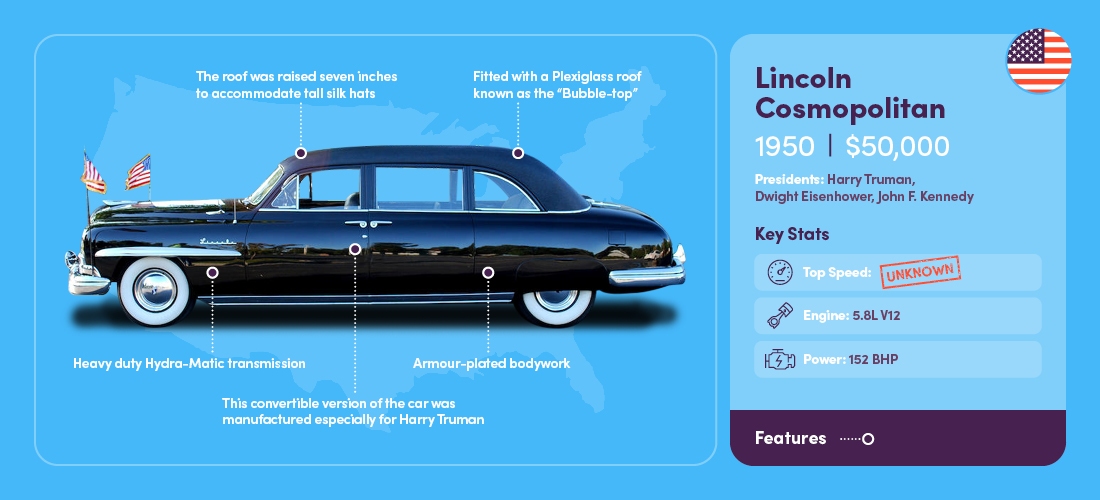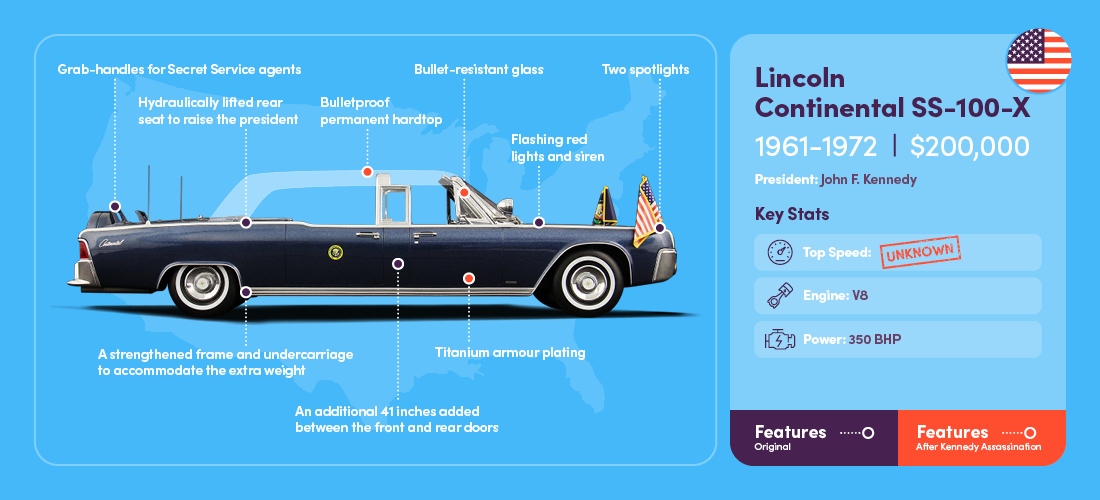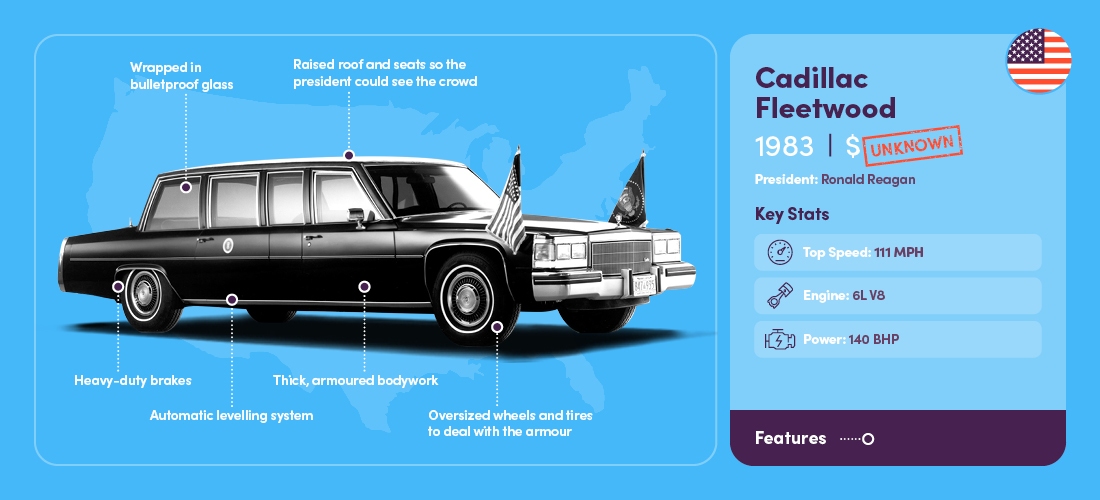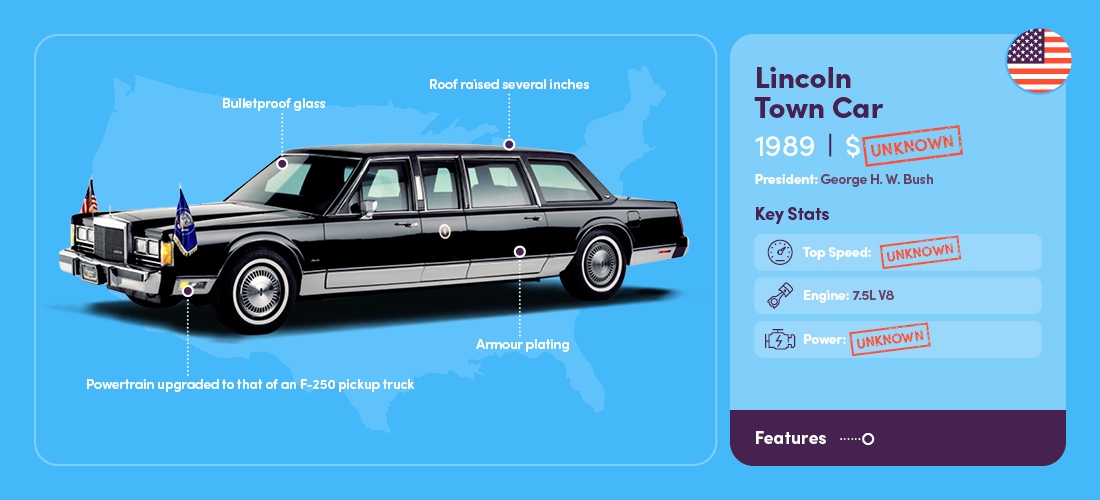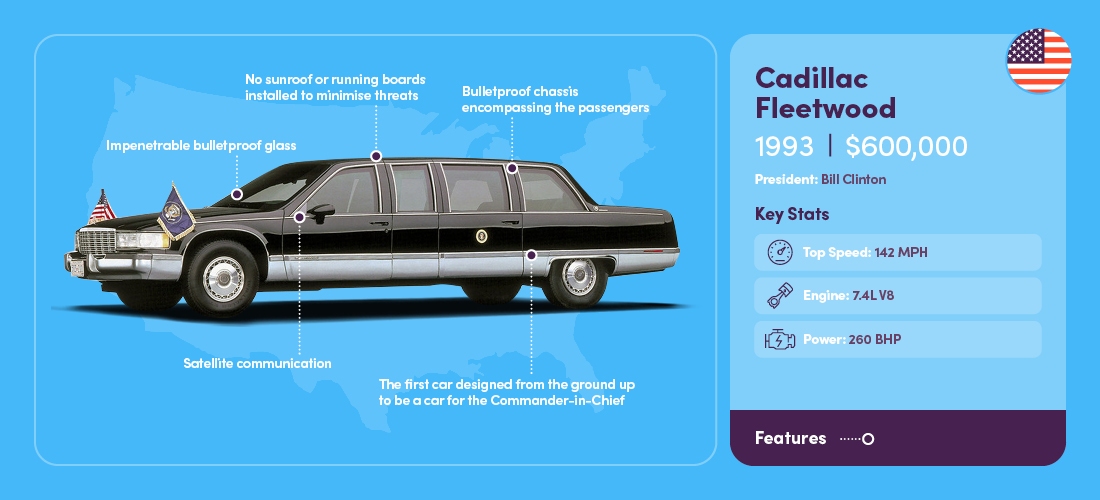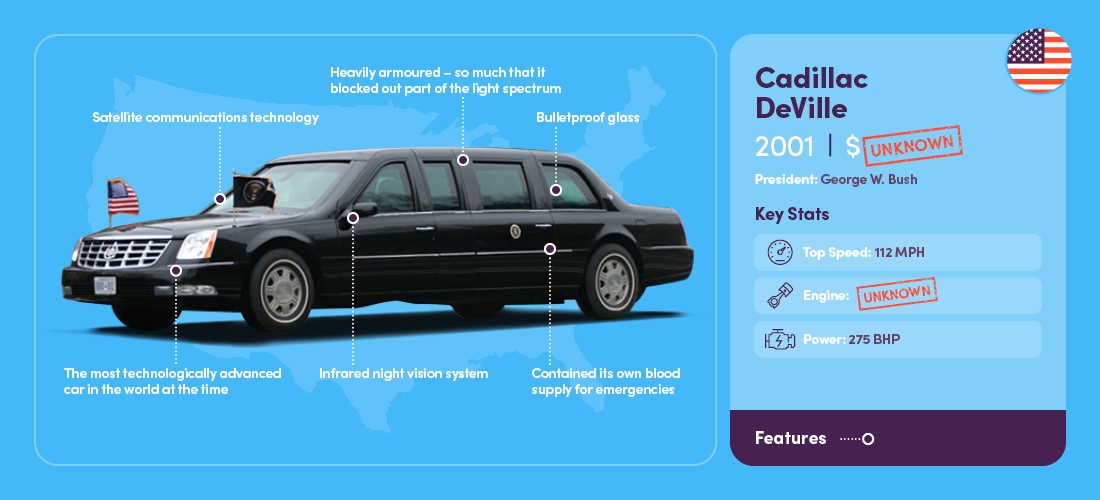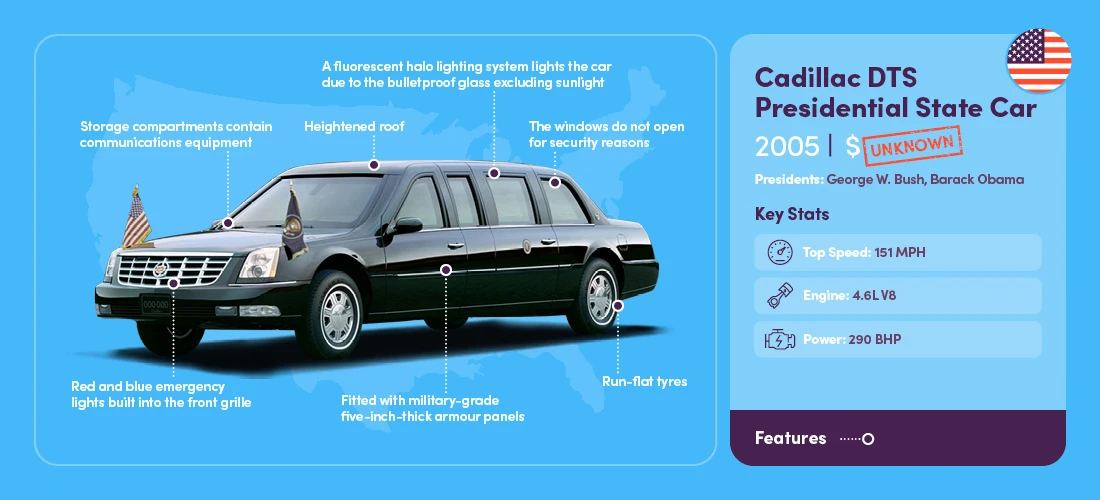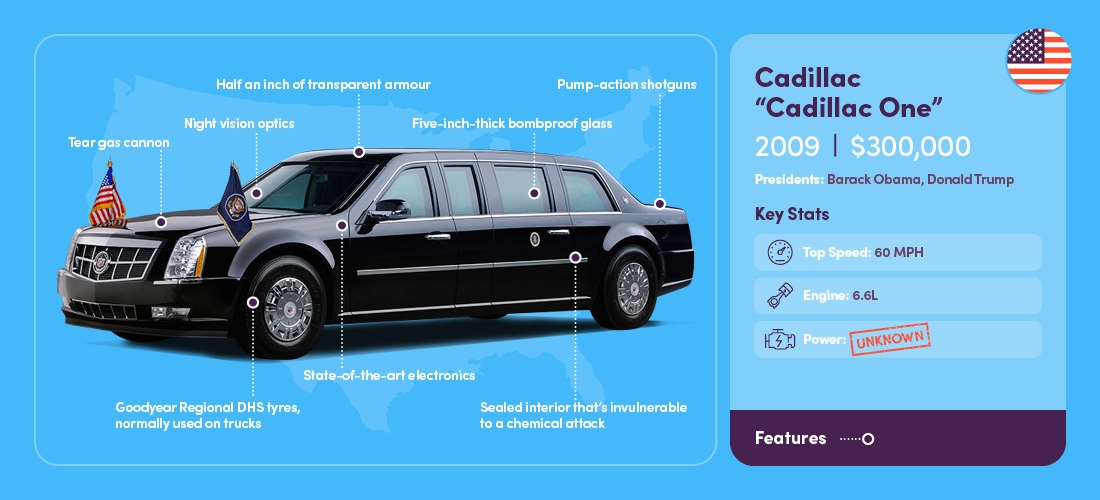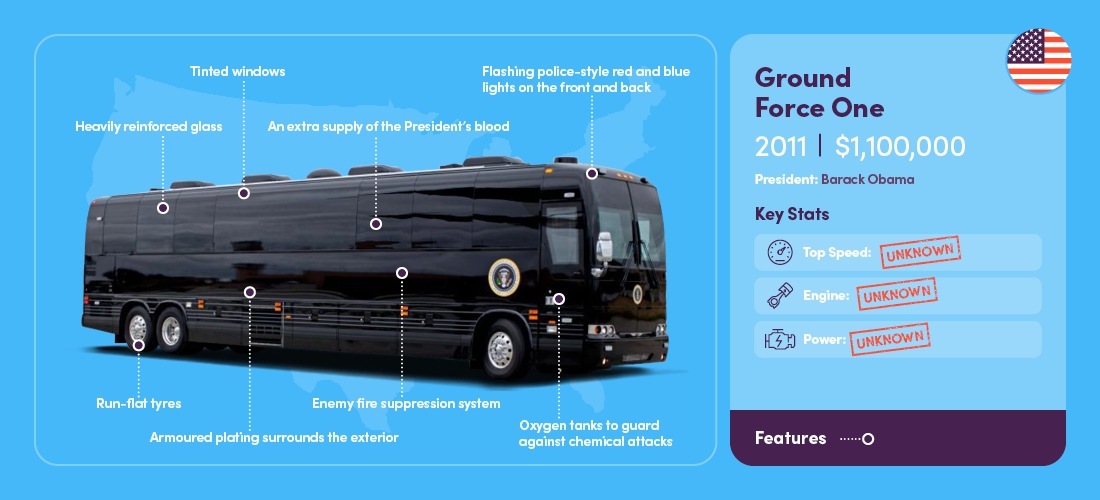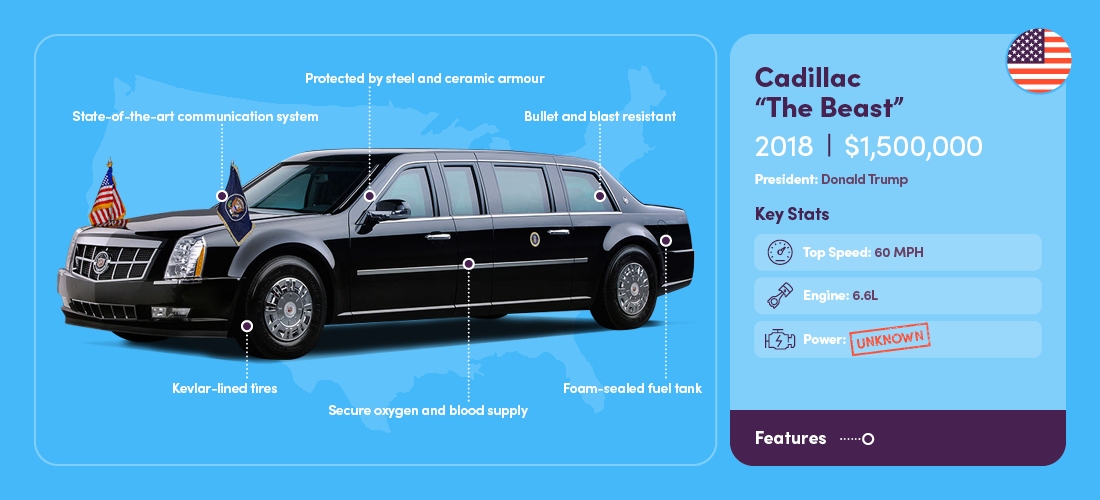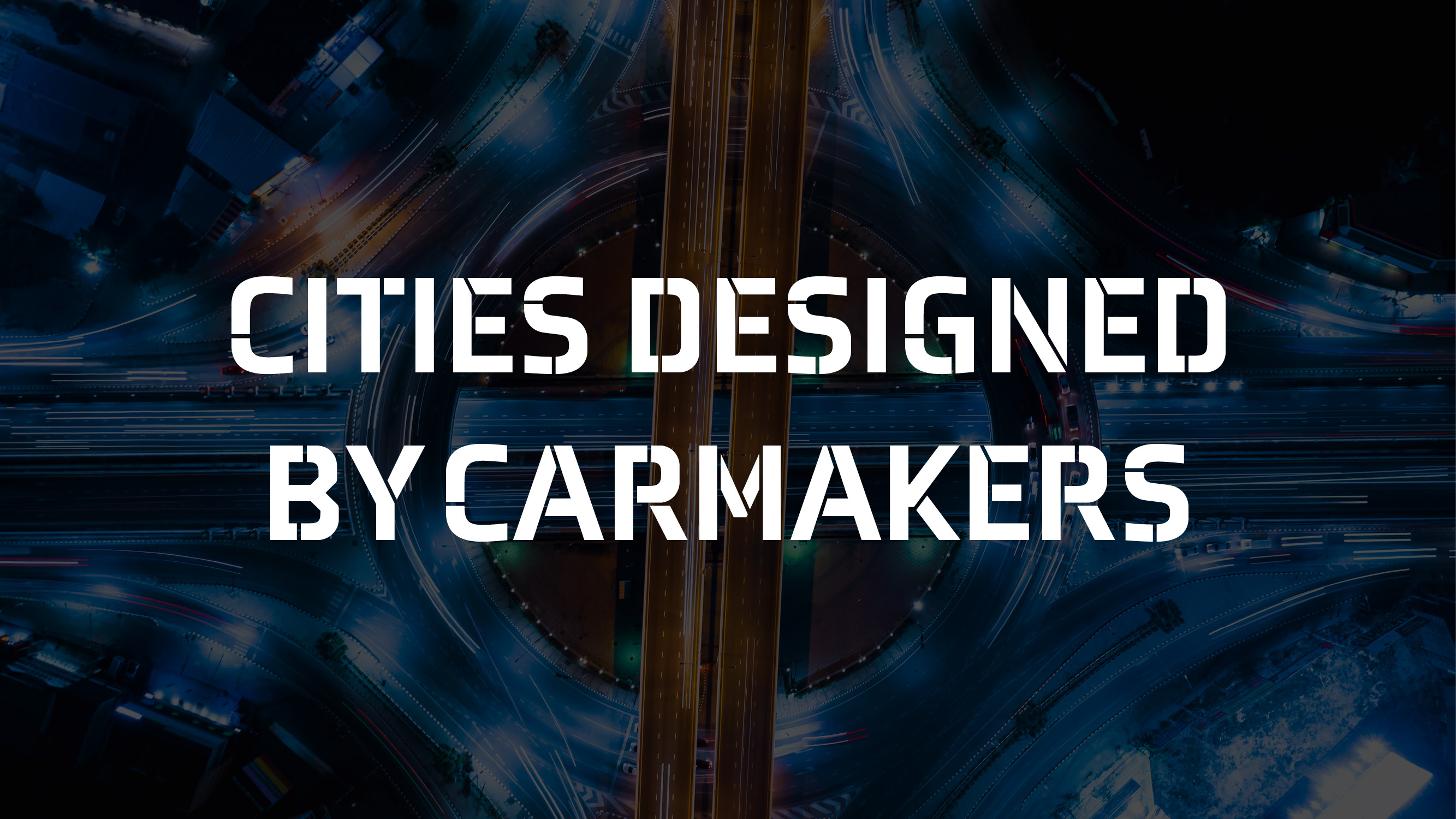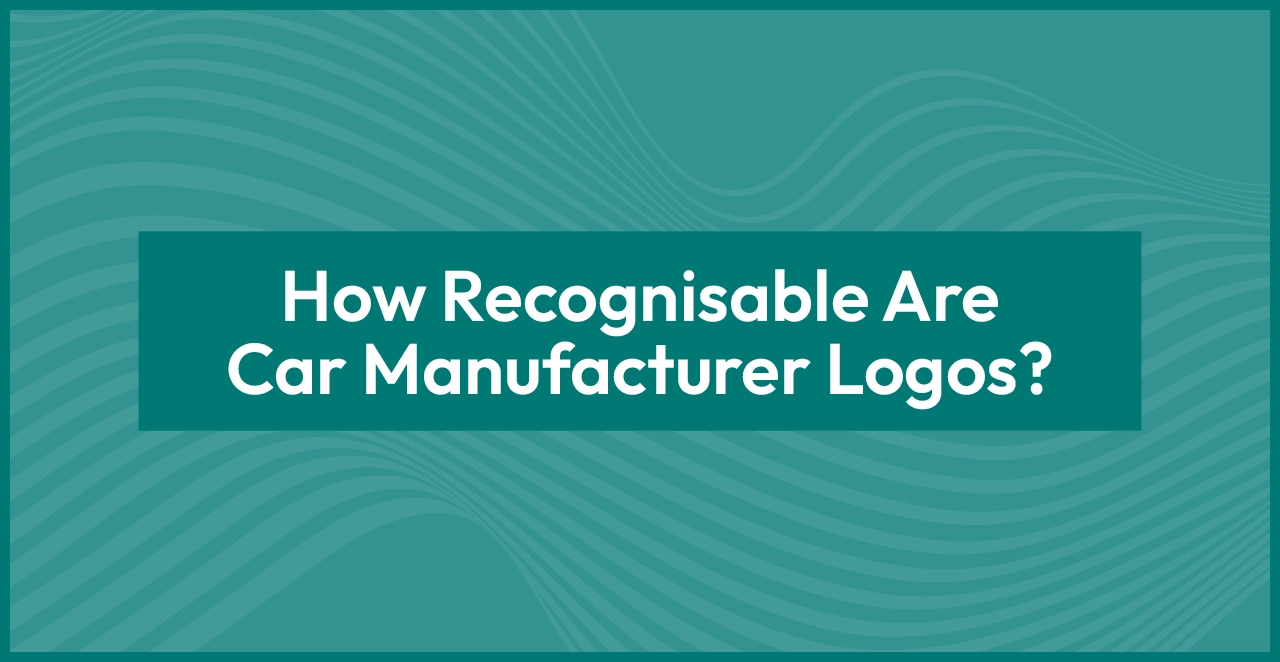The first official presidential state car was used by Franklin D. Roosevelt in 1939 and boasted a two-way radio as one of its defensive capabilities. Fast forward to today, and "The Beast" can withstand an asteroid (or so some say).
With November and the US presidential election fast approaching, car leasing experts Vanarama thought it long overdue to look back at the official state cars that have been used by United States presidents throughout the years. As you can imagine, with the first state car being put in place in 1939, they have been updated significantly over the past 80 years to protect against an array of ever-advancing security threats against the president.
You can see above how the aesthetics of all 12 official state cars have changed over time, from cars that didn't even have a hardtop, to mobile bunkers that have their own blood bank and could possibly survive an asteroid.
We've also figured out, where possible, which car cost the most to build when accounting for inflation. It's fair to say we were surprised by the answer.
Lincoln K Sunshine Special
1939
The first official presidential state car was the Lincoln K Sunshine Special. It was used by Franklin D. Roosevelt, the 32nd president of the United States, and was in service for three years until 1942. It was also the first presidential car to receive customisations as recommended by the Secret Service. The car started life with a two-way radio, extra-wide running boards and handles for Secret Service agents to grab and ride on the outside of the car should it be necessary.
However, this all changed in 1941 after the attack on Pearl Harbour during WW2. Suddenly, the protection of the president was taken a lot more seriously and changes were made to the car to match the climate. Armoured plated doors were added to the car, along with bulletproof tires. If the occupants of the car needed to go on the attack, storage compartments for submachine guns were added down the sides of each door.
Lincoln Custom
1942
The second presidential car was the 1942 Lincoln Custom and was the first to be built during WW2. Due to this, the maximum amount of protection for presidents Franklin D. Roosevelt and Harry Truman was needed and would be installed from day one. It was the first presidential car to be delivered with protective armour. The armour added an additional 7,000 pounds (3,200kg) to the original weight of the car.
To accommodate the extra weight, the car was outfitted with a Bendix Aviation brake servo, which provided assistance to the driver to slow the car down. The car also featured a "parade generator" which would keep the lights running over extended periods of time should they be needed. After the war in 1946, the car was refitted with a new grill clip for modernisation.
Lincoln Cosmopolitan
1950
President Harry Truman didn't get to pick the previous presidential car he rode in, but now it was his turn. Legend has it that during the 1948 presidential race, General Motors would not give use of their cars, and because of this he held a grudge against them. When he was to choose the automotive manufacturer to make the new car, he chose Lincoln over Ford because of this.
During this time, it was becoming more common for presidential cars to be modified, and one of the more curious changes was to add extra headroom to the car to accommodate tall silk hats, a popular fashion accessory at the time. A more practical customisation in order to defend the president from attack was the armour-plated bodywork. In 1954, the famous "bubble-top" was added by President Dwight D. Eisenhower after he realised that when it rained, no one could see him in the car when the roof was up during a parade.
Lincoln Continental SS-100-X
1961 - 1972
Four variants of the Lincoln Continental were used between 1961 and 1972, but we've focused on the SS-100-X. This was the Secret Service code name given to the now-infamous presidential limousine which was used by John F. Kennedy. The car is perhaps best known due to the assassination of President Kennedy on 22nd November 1963. The SS-100-X was the last open-top presidential car to be actively used because of this, although the car remained in service after the incident for eight more years.
Although the car was sleek and stylish, it lacked many security features that you'd expect to find on a car fit for the leader of the free world. After the assassination, many new features were added including titanium armour plating, a bulletproof permanent hardtop and glass. Three more variations were put into service in the years following, used by Lyndon B. Johnson, Richard Nixon, Gerald Ford, Jimmy Carter and Ronald Reagan. As you might imagine, they were all extremely heavily armoured with America still recovering from the Kennedy tragedy.
Cadillac Fleetwood
1983!
Ronald Reagan was the first and only president to use the Cadillac Fleetwood limousine when it was delivered to the White House in 1983. It was the first time, after a long list of Lincoln cars, that Cadillac was given the chance to produce a presidential car. The car famously featured a raised roof and seats to make it easier for President Reagan to see the passing crowds. Unlike previous cars that presidents got around in, it was totally encased in bulletproof glass.
Other security features included thick, armoured bodywork, heavy-duty brakes to slow the car down due to the increased weight, along with oversized wheels and tires. By this time, presidential cars were no longer used outside of official duties because of security concerns.
Lincoln Town Car
1989!
The Lincoln Town Car would succeed the Cadillac Fleetwood when it was commissioned by George H. W. Bush in 1989 and is perhaps the hardest presidential car to find accurate information on. Why? We're not sure. It was the last Lincoln car to ever be used as an official state car, with Cadillac taking the reins permanently from there on.
The car featured security upgraded such as bulletproof glass and armoured plating, and the powertrain had to be updated to accommodate the extra weight. To be honest, we'd love to give you more information on this car, but information is extremely hard to find. Almost suspiciously hard, some would say!
Cadillac Fleetwood
1993!
Bill Clinton's time as president would see the return of an updated Cadillac Fleetwood limousine as the official state car. The car purposely didn't have a sunroof or running boards installed to minimise threats from the outside world. The car, powered by 7.4L V8 engine from a Chevrolet pickup truck could reportedly hit speeds of up to 142 MPH.
CNN once interviewed a former Secret Service agent named Joe Funk, who also happened to be the driver of the presidential car for a portion of Bill Clinton's time in office. During the interview, he described the inner workings of the car, saying that although the president is essentially totally cut off from the outside world due to the bulletproof nature of the car, he had all manner of communication systems available to him. In 1993, it was considered extremely high tech to have access to phones, internet and "satellite communications" while in a vehicle.
Cadillac DeVille
2001!
Although the presidential state car introduced in 2001 was a Cadillac DeVille by name, some would say it wasn't really a DeVille at all. By the time the millennium rolled around, Cadillac had stopped producing a single-framed car that would be suitable for conversion into a limousine. Add on to this that Secret Service requirements for a presidential car were increasing and becoming even more ambitious. According to speculation at the time, the limousine's frame is built upon a chassis of a General Motors SUV.
According to commentators, the car was the most technologically advanced in the world at the time. It included an infrared night vision system and was so heavily armoured that the bulletproof glass actually blocked parts of the light spectrum. The car was also rumoured to contain an emergency supply of blood in case of emergencies.
Cadillac DTS Presidential State Car
2005**
**Introduced as the new presidential state car in 2005, the Cadillac DTS was a hand-crafted model built for the requirements of the Secret Service. Although a lot of the car's details are hard to come by due to the sensitive nature of vehicle, we do know that the vehicle is one of a kind. Perhaps the most impressive security measure is the five-inch-thick armour panels that surround the car. The windows, unlike other presidential cars, don't open to ensure the safety of all the occupants.
Like the Cadillac DeVille, the bulletproof glass on the DTS is also so thick that it restricts certain aspects of sunlight from entering. To address this, a fluorescent halo lighting system was added to ensure the president inside can catch some rays without having to open a window. A glass partition also divides the driver and the occupants in the back of the car, while run-flat tyres made it next to impossible to slow the car down, even when deflated.
Cadillac "Cadillac One"
2009
The Cadillac "Cadillac One", so named because it's not based on any known Cadillac model, came into action on 20th January 2009, as it drove President Obama two miles down Pennsylvania Avenue to his inaugural parade. The car was aided in design by the Secret Service and has perhaps the most complete defensive capabilities of any previous presidential car. Featuring state-of-the-art electronics, five-inch-thick bombproof glass and a sealed interior to prevent against chemical attacks, the car is super secure.
Upon the release of the Cadillac One, a press release revealed that the car's "security and coded communications systems make it the most technologically advanced protection vehicle in the world". The Cadillac One was the presidential car until 2018, when a new model came into service dubbed "The Beast", although both names are used interchangeably in reference to both cars.
Ground Force One
2011
Named after Air Force One, the president's official plane, Ground Force One is a black armoured bus used by the president and other officials from the government. Standing at 45m-long, it was specially designed by the Secret Service. Formerly, the Secret Service used standard buses that they leased and fitted with equipment needed to run the country from eight wheels. However, it was announced in 2011 that a new permanent solution had been found – Ground Force One.
The bus features an array of security features including oxygen tanks to guard against chemical attacks, an extra supply of the president's blood and an enemy suppression fire system. It's used mainly for transportation to more remote areas, such as during Obama's bus campaign through Ohio and Pennsylvania in 2012, according to Business Insider. In order to wave at crowds, occupants have to stand next to the driver as all other windows are tinted.
Cadillac "The Beast"
2018!
Similar to the 2009 edition, "The Beast" features a similar array of security measures to its predecessor and is essentially an updated version of the car with a few minor differences. Road & Track reported that "the design appears to be a simple evolution of the old model with more current Cadillac design cues, like an Escalade sedan." The car gained notoriety after Donald Trump's state visits to the UK, and his 2018 meeting with Kim Jong-un.
The car features Kevlar-lined tires to prevent against attacks trying to slow the car down, along with a foam-sealed fuel tank to ensure the car could never explode if it was involved in a conflict. As you'd expect, presidential cars now come with a state-of-the-art communication system as standard and a secure oxygen and blood supply. It has been called a "rolling bunker" one commentator said, and "may be ugly, but it could withstand an asteroid."
Presidential cars have certainly changed over time, along with their prize passengers. Who will be riding "The Beast" in January 2021 for the presidential inauguration? We'll have to wait and see.
Which President Had The Most Expensive Car?
As it turns out, when adjusted for inflation, President Kennedy's Lincoln Continental SS-100-X was the most expensive of all the presidential cars. It's reported by The Henry Ford that a standard Lincoln Continental would have cost $7,347. However, due to the customisation of Kennedy's car, the actual cost was nearly $200,000 back in 1961. Adjusted for inflation, that would come to a sobering $1,741,000 today.

